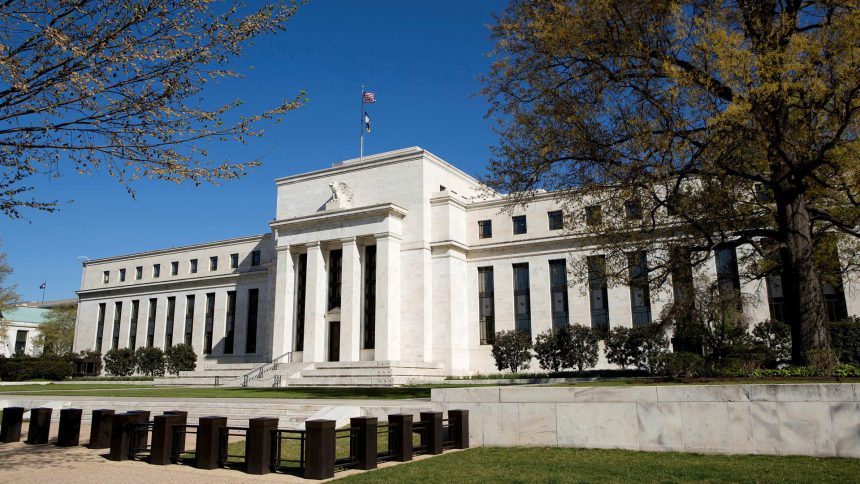Wednesday is set to be a big day for investors with fresh inflation data in the morning and a new summary of economic projections from the Federal Reserve in the afternoon. But as far as Wall Street is concerned, the Fed event, at least, could largely be a snooze.
Broadly speaking, market observers expect that investors have already priced in how the Fed may proceed with interest rates. While the central bank in March last projected three rate cuts over the course of 2024, the latest batch of mixed economic signals have investors paring their expectations down to just two rate cuts, or maybe even one, coming from policymakers.
In fact, markets were last pricing in roughly two rate cuts this year, with the first coming in September, the CME FedWatch Tool showed, based on trading of 30-Day fed funds futures contracts. (Note those projections have been especially volatile in recent days).
So long as this week’s Fed meeting sticks to the consensus view, many observers expect stocks will breathe a sigh of relief. The S&P 500 has continued to hit new highs, most recently on Monday, shrugging off any signs of economic weakness or sticky inflation. It’s higher by more than 12% in 2024.
“This is one of the busiest of the days on Wednesday,” said Art Hogan, chief market strategist at B.Riley Financial. “But I suspect that all of that comes and goes without too much market disruption.”
Dave Sekera, chief U.S. market strategist at Morningstar, put it still more plainly: “I suspect it’s actually going to be probably a pretty boring, relatively uneventful meeting.”
Possibility for surprise
Of course, the Fed meeting still has the potential to surprise investors. A move to just one rate cut outlined in the Fed’s quarterly summary of economic projections could prove more distressing than a move to two rate cuts, a decision that B. Riley’s Hogan called a “near-term market negative.”
Meanwhile, a move to a more hawkish stance by Fed ChairJerome Powell at his press conference Wednesday after the meeting wraps up could also put stocks in a tailspin. Powell will have to explain how the central bank plans to proceed in its campaign against inflation as some recent labor data shows signs of weakening.
The Fed first began lifting rates from near zero in March 2022, but hasn’t moved them in one direction or another since July 2023.
“It would sort of put Fed policy into a little bit of a bind if you have inflation staying higher than the Fed would like, [and] unemployment also rising more than the Fed expected,” said Brian Nick, senior investment strategist at the Macro Institute. “That will put the press conference in greater focus, because Powell will have to explain how the Fed can be missing on both of its mandates, and which mandate it will start to favor should things continue to go in this direction.”
The Fed’s “dual mandate” refers to a 1977 amendment to the Fed’s statutory charter promoting maximum empoyment and stable prices.
“So, I think it’s set up for volatility,” Nick added.
To be sure, the strategist — who anticipates stock moves in the 1% to 2% range — said he does not expect moves greater than 2% in either direction. He noted that the Fed chief in recent meetings has kept to a surprisingly dovish tone that has driven stocks higher.
“I’d be surprised if the Fed’s going to message anything that’s so shocking that it’s going to send the markets more than 2% in either direction,” Nick said.
Similarly, Hogan agreed the Fed chief will try to deliver another message that’s “down the middle of the fairway,” reiterating the central bank’s data-dependent approach to its inflation target.
In particular, Nick said a soft inflation reading early tomorrow could ease pressure on Powell to sound overly hawkish on interest rates. May’s consumer price index is scheduled for release by the Bureau of Labor Statistics at 8:30 a.m. ET Wednesday while the Fed meeting wraps up at 2:00 p.m. and Powell’s press conference starts a half hour later.
Longer-term concerns
What’s more concerning for some investors is the longer-term impact on stocks. Morningstar’s Sekera expects stocks are fairly valued now, and could face downside risk as investors head into the second half of the year.
In particular, these observers worry that large-cap tech stocks may be vulnerable after their recent outperformance, and say better opportunities may be found in the broader market. Nvidia, for example, last week rose above $3 trillion in market value for the first time.
Macro Institute’s Nick anticipates a 20% to 30% fall from wherever stocks top out, though he said that a correction may not come until next year.
Jeff Klingelhofer, co-head of investments at Thornburg Investment Management, worries that the impact of higher-for-longer interest rates will eventually make be felt in the real economy, not just Wall Street, citing worrying signs of a weakening consumer. He anticipates that a correction of a 10% could occur this year, advising investors to steer clear of large caps, where sentiment is overstretched, and into international stocks.
“I think markets will be forced to come to a reckoning … that underlying growth is slowing,” Klingelhofer said.
Read the full article here




